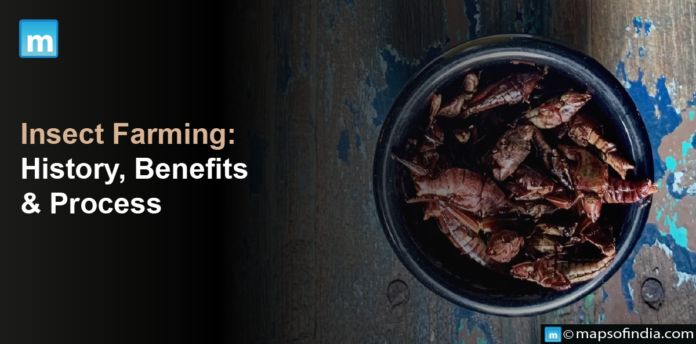Insect farming, also known as micro livestock, has come to light as a cutting-edge and long-term response to some of the most important issues confronting our planet, including food security, environmental degradation, and resource depletion. Insect farming has become popular as a feasible and environmentally beneficial alternative to traditional animal farming.
History of Insect Farming
In many civilizations throughout the world, the practice of insect farming has a long and intensive history. The nutritious significance of insects has long been understood by indigenous tribes, who frequently include them in their meals. In contrast, insect farming as a sustainable and high-protein food source recently attracted significant attention in Western nations. Early in the 21st century, researchers and businesspeople started looking into the possibility of insect farming as a solution to the world’s food and environmental problems. This is when the present interest in insect farming first emerged.
Benefits of Insect Farming
-
Reduced Environmental Impact
Insect farming has a substantially smaller environmental impact than conventional cattle farming, which is one of the most convincing arguments for adopting it. Traditional animal husbandry plays a significant role in producing greenhouse gases, deforestation, and water pollution. In comparison, insect farming uses resources exceedingly effectively.
-
Reduced Land Use
The small amount of space needed for insect farming makes it an appealing option as urbanization and land degradation continue to threaten our natural landscapes. Insect farming is appropriate for urban settings since it can further maximize space use in controlled environments and vertical farming.
-
Minimal Water Usage
Insect farming uses less water than typical cattle farming. Insect breeding typically uses a fraction of the water required for cattle or poultry production, helping to contribute to water conservation efforts.
Steps Involved In Insect Farming
-
Raising
To promote their growth and reproduction, insects are grown in carefully monitored conditions. Their health is ensured by carefully controlling the temperature, humidity, and lighting conditions.
-
Feeding
Depending on the species, different foods are provided to insects. Common feed sources include organic waste, agricultural waste, and specially prepared bug meal.
-
Harvesting
When an insect is ideal for consumption, it is harvested at a particular point in its life cycle to ensure tenderness and flavor.
-
Processing
Insects go through processing after being harvested to remove undesirable portions such as wings or legs and get them ready for different culinary uses. They can be used whole in meals or dried and processed into powders.
-
Cooking Uses
Insects can be utilized in a wide range of culinary preparations, such as a source of protein in baked goods, snacks, and even upscale meals. To fit various tastes and preferences, they might be flavored.
Challenges Of Insect Farming
-
Consumer acceptance
Due to cultural resentment, some people are hesitant to eat insects.
-
Regulation
The insect farming industry is still relatively new, and there are not yet many regulations in place. This can make it difficult for businesses to operate.
-
Technical difficulties
Since the insect farming industry is still relatively young, certain difficulties exist in this area. For instance, insect farmers must develop effective methods for raising insects in a controlled setting and strategies for lowering the risk of contamination and disease.
Conclusion
Insect farming offers a possible solution to some of the world’s most pressing problems. Insect farming is gaining popularity as a viable and eco-friendly alternative to conventional cattle farming due to its low environmental effect, high nutritional value, and potential to provide a sustainable source of protein.





